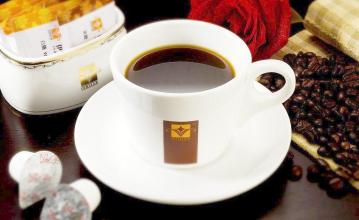Single coffee Name Type Siphon pot Practice Introduction
1. Equipment: siphon pot, coffee cup, coffee spoon, sugar bag, milk ball
2. Assemble siphon kettle
3. Visually add water: pour nine portions of full water into a siphon pot in a single coffee cup (wipe dry the lower seat to avoid burning)
4. Heating: insert obliquely into the upper seat to observe the situation of the chain beads
5. When the chain beads hang water, the water temperature of the lower seat is about 80 degrees Celsius.
6. the lower seat apron has formed a water film, insert it into the upper seat, twist it, and strengthen the seal.
7. The best temperature for extracting coffee is 88 degrees Celsius, 93 degrees Celsius or 90 degrees Celsius plus or minus 5 degrees Celsius.
Temperature control: just after the water is introduced into the upper seat, the temperature is about 97Mel 98 degrees Celsius, which makes the upper seat boiled water stable.
9. Powder: timing, mixing, fully mixing after 40 seconds, full extraction after 20 seconds
10. Turn off the fire: dial the upper seat and pour the bottom water so that the coffee liquid in the upper seat can quickly flow back to the lower seat
11. Cleaning, reset
1. Pour hot water into the lower seat, the upper seat can be inserted obliquely into the lower seat, and then heated. This can avoid the occurrence of scalding when the water is too hot in the lower seat and then inserted into the upper seat.
two。 The blister becomes bigger, that is, straighten the upper seat. At this time, the coffee powder can be put into the upper seat (or in advance).
3. When the hot water rises into the upper seat and submerges the amount of 2GP3 powder, remove the alcohol lamp or reduce the firepower, starting from the center of the circle, stir around the circle with a wooden spoon, so that all powders can be fully watered. The steaming process lasts about 15-20s. If this is done well, it will look like a hill in the middle of the powder. In my opinion, steamed coffee can be more rich, thicker, and improve the thin and light feeling of individual coffee (relative to espresso). In this process, special attention should be paid to the control of firepower. If the temperature is too low, the water in the upper seat will fall, the temperature is too high, and the water in the lower seat will rise rapidly, which will not achieve the goal of steaming. Therefore, if you are a novice, it is recommended to skip this step, skip to step 4, and try this step after you are familiar with it.
4. Move back to the alcohol lamp, increase the firepower is that the lower seat of the water quickly rises to the upper seat, immediately reduce the firepower, it is best to keep the upper seat coffee boiling below the liquid level, gently stir the powder layer with cross stirring. That is, "front, back, left, right"
5. Practice smelling incense, observing changes in the powder layer, or starting timing, whichever method you use, but avoid stirring all the time (personal preference for cross mixing, personal habit). For beginners, the timing method can be used. Generally speaking, the boiling time of deep-roasted coffee is about 40s, stirring every 15s, and the boiling process is completed after three times of stirring. And medium or medium depth baking, then 20 seconds apart, three times stirring to complete the cooking.
6. When it's time to get the concentration, taste or setting you want, quickly remove the alcohol lamp, quickly shake the upper seat and pull it out of the lower seat, pour out the remaining water from the lower seat, and then quickly insert the upper seat into the lower seat. (this step is the so-called "bottom drawing method") after the bottom is drawn, there is no extra water left in the bottom seat, which makes the taste of the coffee liquid more natural and will not have the feeling of drinking "water". It is suggested that beginners can also skip this step, otherwise the loss will outweigh the gain if you waste your coffee and burn yourself.
7. Quickly insert and wipe the lower seat with a wet dishcloth (evenly and quickly, the wet dishcloth must be twisted very dry, do not fix it in one place, lest the lower seat burst), so that the coffee can quickly enter the lower seat and reduce the acidity. If your coffee beans are fresh enough, there will be a lot of foam as the coffee falls.
8. After the coffee has separated and fallen from the upper seat, gently shake the upper seat to pull out of the lower seat.
9. Gently shake the seat to make the coffee mix well. (because the coffee concentration in the upper seat comes down from small to large, the closer the coffee powder is, the higher the coffee concentration is.) pour into the coffee cup (don't forget to warm the cup in advance)

Important Notice :
前街咖啡 FrontStreet Coffee has moved to new addredd:
FrontStreet Coffee Address: 315,Donghua East Road,GuangZhou
Tel:020 38364473
- Prev

Baking method of mocha Columbia-usage of mocha kettle
Process analysis: initial heat: after the kettle is heated, the air part expands by heat, resulting in pressure, and the water reaches the powder trough through the aqueduct. After soaking in water, the coffee powder expands rapidly to form pressed powder. At this time, the water in the lower pot is resisted by pressed powder, and the closed pressure in the lower pot continues to increase. The purpose of initial heat is to raise the water level to the position of the powder trough and to make the coffee powder form cakes, so that high pressure and high temperature are not needed.
- Next

Can drip coffee make grease?-how to use a drip coffee pot
First, pour out the stale water in the machine, second, clean the pipes of the boiler and cooking system, third, clean the coffee funnel, and fourth, preheat the coffee pot. Put a matching piece of filter paper inside the funnel of the coffee machine, press each cup of 7mur9g coffee powder into the filter paper (be careful that the coffee powder enters the filter paper and the wall of the funnel), and close the funnel door. Press 175 cents per cup
Related
- What is the Philharmonic pressure? How to use Philharmonic pressure to make delicious coffee
- Why does a hand grinder have more fine powder than an electric grinder?
- In addition to the hot mom, what is the difference between the versions of EK43 | ditting and Mahdi ek43?
- What kind of equipment do you need to make coffee by hand? Introduction to novice starter cooking equipment tools
- Espresso needs to be ground how thick and thin scale entry Italian Coffee Machine Bean Grinder investigation and Grinding course
- How much does it cost to open a small private cafe? How much does it cost to learn coffee? How to operate it?
- The difference between the flavor characteristics of hand-brewed coffee and coffee maker is hand-brewed coffee really better than coffee maker? Can I use a coffee machine to make coffee beans by hand?
- The difference between 01 and 02 of hario v60 filter cup what is the difference between 01 and 02 filter cup opening and cooking flavor
- What's the difference between the smart cup and the French kettle? Which is better, the French kettle or the Smart Cup?
- What's the difference between a smart cup and a V60 filter cup? The difference between the taste of smart cup and hand-brewed coffee

